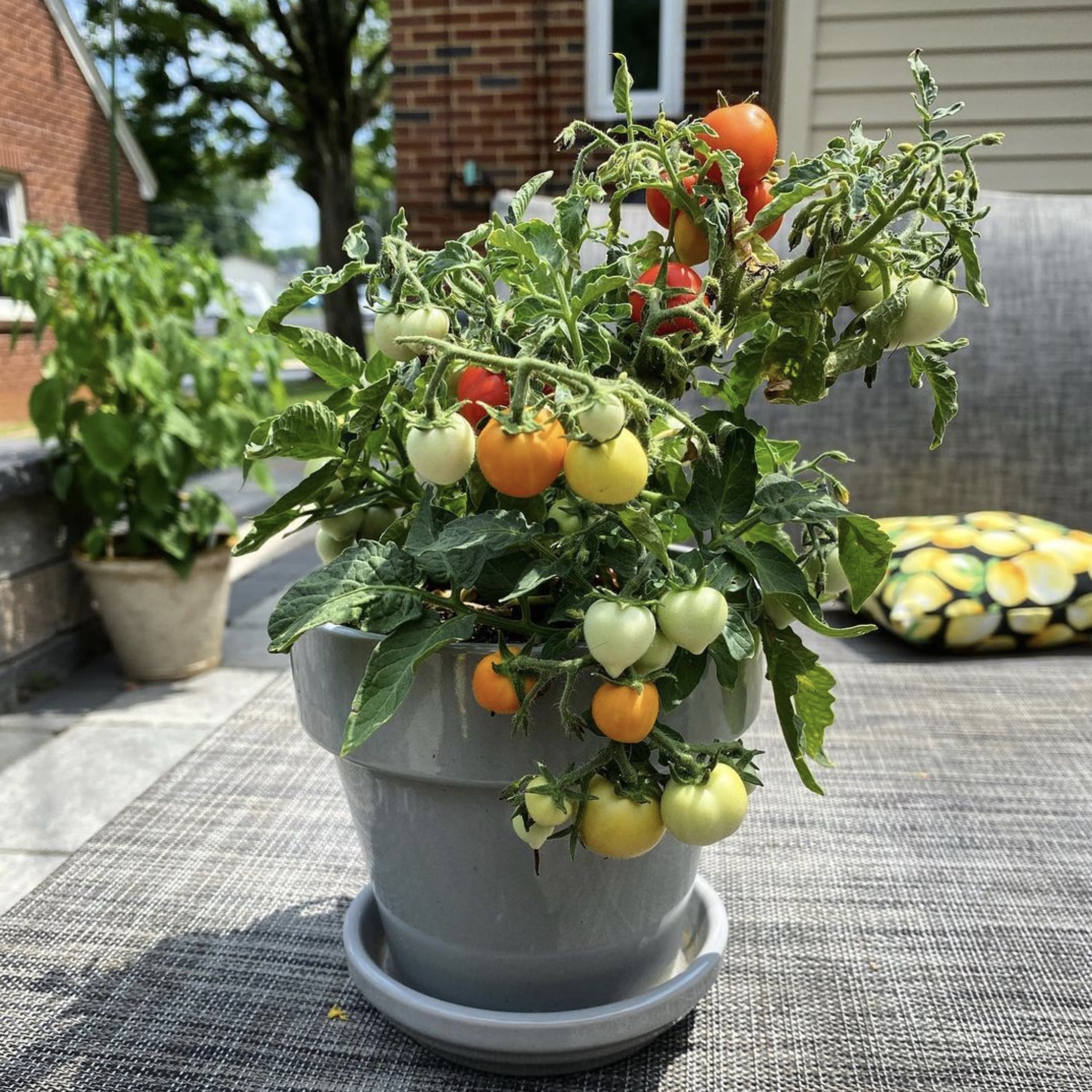Micro Tom tomato plants, a compact and prolific variety, offer home gardeners the opportunity to cultivate delicious tomatoes in limited spaces. With their unique characteristics and ease of cultivation, these miniature tomatoes have become increasingly popular among urban gardeners and those with limited outdoor space.
This comprehensive guide will delve into the fascinating world of Micro Tom tomato plants, providing detailed information on their characteristics, growing requirements, harvesting techniques, and culinary uses. Along the way, we will explore the unique features that set Micro Tom tomatoes apart from other varieties and discuss their potential health benefits.
Growing Micro Tom Tomatoes: Micro Tom Tomato Plants

Micro Tom tomato plants are a compact and productive variety, making them an excellent choice for small gardens or containers. They thrive in warm, sunny conditions and require well-drained soil.
Growing Conditions
Micro Tom tomatoes prefer a soil pH between 6.0 and 6.8. They require at least six hours of sunlight per day and regular watering. Avoid overwatering, as this can lead to root rot.
Planting, Micro tom tomato plants
Start seeds indoors six to eight weeks before the last frost. Sow seeds 1/4 inch deep in a seed-starting mix. Keep the soil moist and warm (70-80°F). Transplant seedlings outdoors after the last frost, spacing them 12-18 inches apart.
Support
Micro Tom tomato plants are a determinate variety, meaning they will stop growing at a certain height. However, they may need support if they become top-heavy with fruit. Use stakes or cages to support the plants and prevent them from breaking.
Planting Schedule
To optimize yield and minimize disease risk, follow a planting schedule that takes into account the specific growing conditions in your area. Consider factors such as average temperature, rainfall, and disease prevalence. Plant tomatoes in succession, every two to three weeks, to extend the harvest season.
Harvesting and Using Micro Tom Tomatoes

Harvesting Micro Tom tomatoes is a rewarding experience, and using them in culinary creations is a delightful endeavor. This guide provides insights into the optimal time and techniques for harvesting Micro Tom tomatoes, along with creative ideas for incorporating them into various dishes. Additionally, it explores the nutritional value of these tiny tomatoes and their potential health benefits.
Harvesting Micro Tom Tomatoes
Micro Tom tomatoes are ready for harvesting when they reach full color, typically within 60 to 70 days after transplanting. To harvest, gently grasp the tomato at its base and twist it slightly to detach it from the vine. Avoid pulling or tugging, as this can damage the plant.
Using Micro Tom Tomatoes
Micro Tom tomatoes are versatile and can be used in a variety of culinary applications. Their small size and sweet, tangy flavor make them ideal for:
- Fresh salads, where they add a burst of color and flavor.
- As a garnish for soups, stews, and pasta dishes.
- In salsas and sauces, where they contribute a tangy sweetness.
- Roasted or grilled, which intensifies their flavor and sweetness.
Nutritional Value and Health Benefits
Micro Tom tomatoes are packed with nutrients, including:
- Vitamin C, an essential antioxidant that supports immune function.
- Potassium, which helps regulate blood pressure and muscle function.
- Lycopene, a powerful antioxidant that has been linked to reduced risk of certain types of cancer.
Regular consumption of Micro Tom tomatoes may offer several health benefits, such as:
- Improved heart health by reducing blood pressure and cholesterol levels.
- Enhanced immune function by providing a rich source of vitamin C.
- Potential reduction in cancer risk due to the presence of lycopene.

Micro tom tomato plants, known for their compact size and prolific fruiting, can thrive in various settings. For those seeking a unique and sustainable way to cultivate these plants, consider utilizing a betta fish tank planter . This innovative system combines the benefits of aquaponics, where fish waste fertilizes the plants, and provides a visually appealing addition to your living space.
The micro tom tomato plants absorb nutrients from the water, while the fish benefit from the filtration provided by the plant roots. By incorporating a betta fish tank planter into your home, you can enjoy fresh, homegrown tomatoes while contributing to a harmonious ecosystem.
Micro tom tomato plants, renowned for their compact size and prolific fruit production, offer a unique culinary experience. The plants’ cherry-sized tomatoes boast a rich flavor profile, making them a versatile ingredient for various dishes. While micro tom tomato plants are primarily known for their culinary uses, they also possess ornamental value.
Their vibrant foliage and colorful fruits resemble the vibrant hues of the paleta de pintor planta , a tropical plant known for its variegated leaves. Just as the paleta de pintor planta adds a splash of color to any garden, micro tom tomato plants bring both aesthetic appeal and culinary delight to the home gardener’s realm.
Micro Tom tomato plants, known for their compact size and early maturity, offer a convenient solution for urban gardeners and indoor growing enthusiasts. They are often grown in containers or small spaces, making them suitable for balconies, patios, and even windowsills.
While these plants are typically grown for their fruit, they can also serve as ornamental additions to a garden or indoor space. James Hardie Plant City , a renowned manufacturer of fiber cement siding and building products, has a long-standing commitment to sustainable and innovative building practices.
Their dedication to environmental responsibility aligns with the growing interest in sustainable gardening and urban agriculture, making Micro Tom tomato plants a natural choice for those seeking to incorporate environmentally friendly practices into their gardening endeavors.